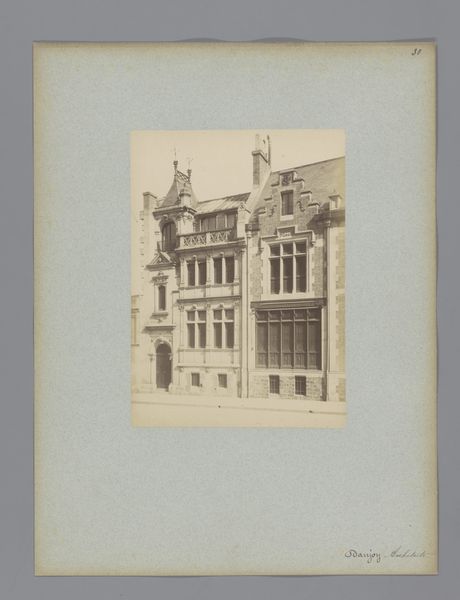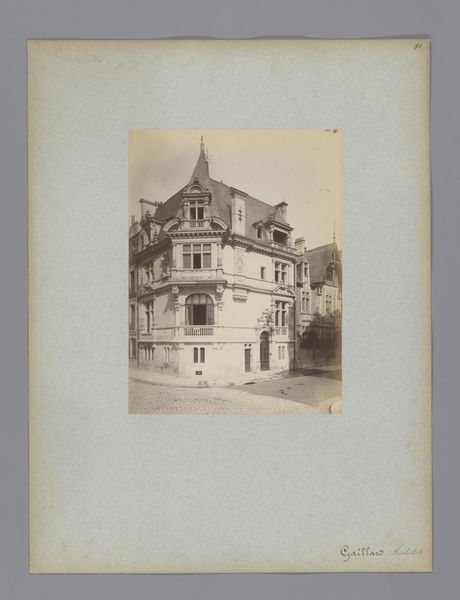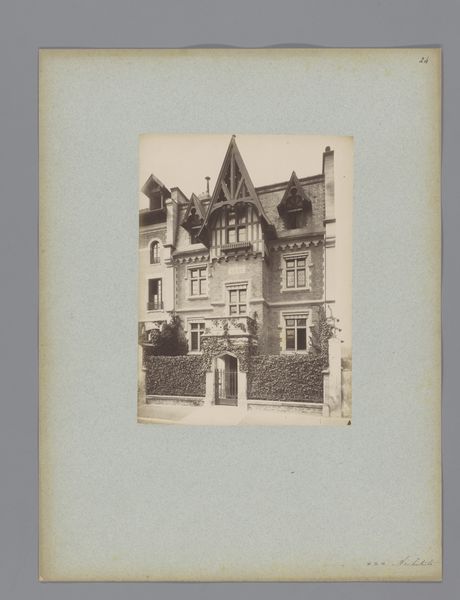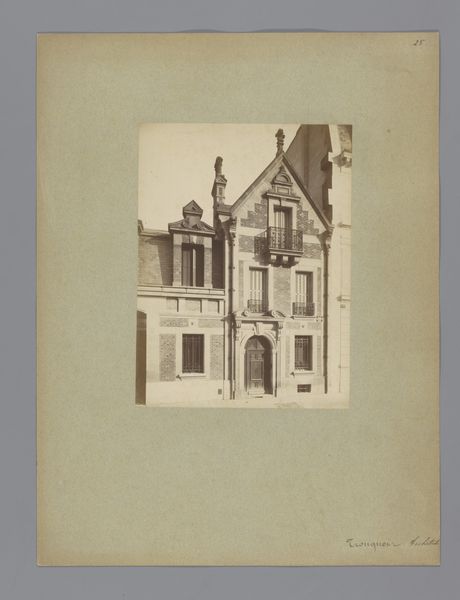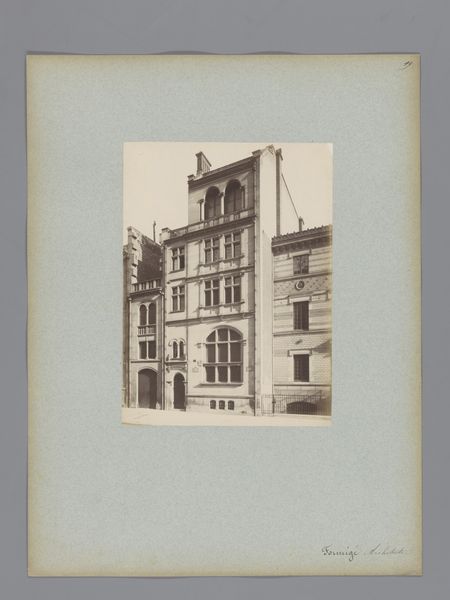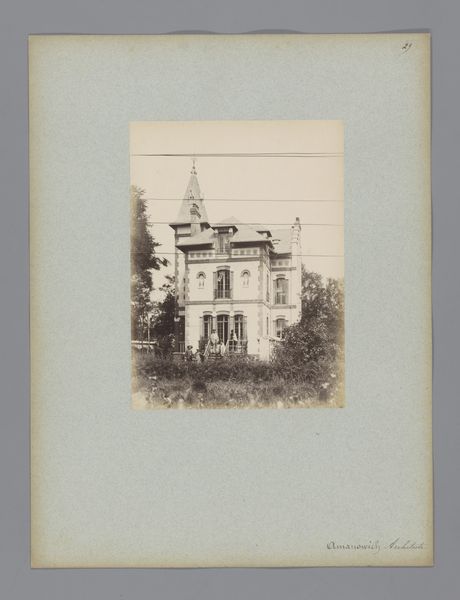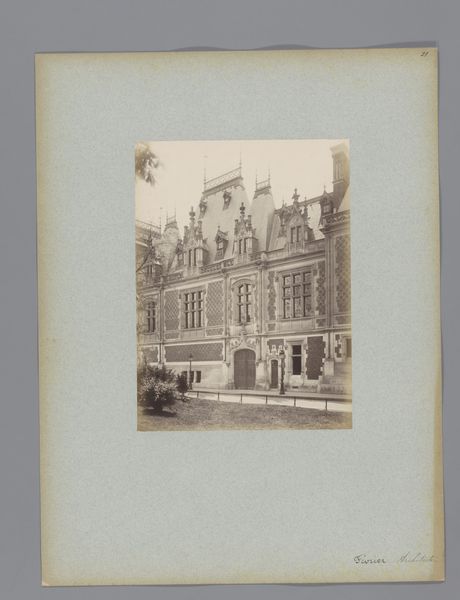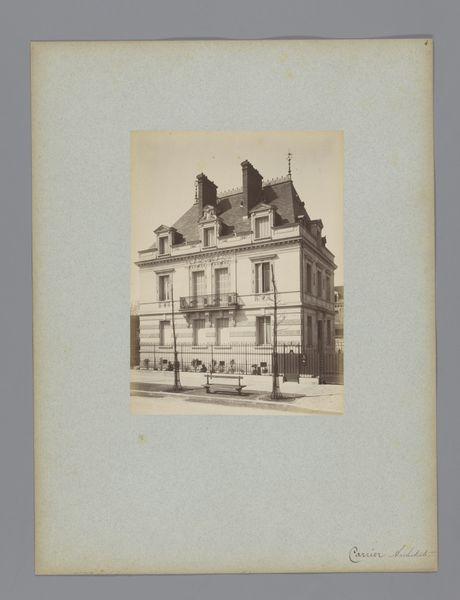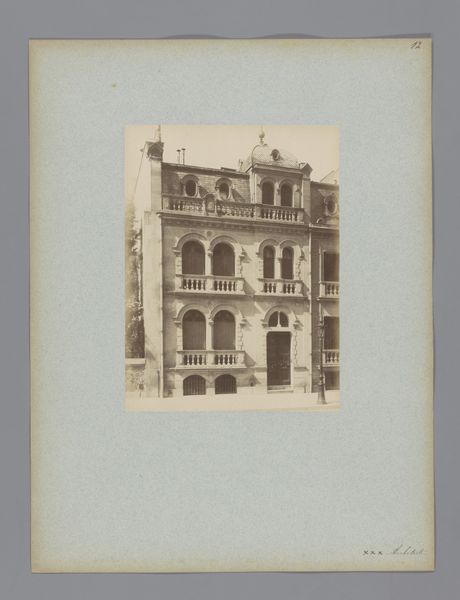
Dimensions: height 219 mm, width 164 mm
Copyright: Rijks Museum: Open Domain
Editor: So this albumen print, "Facade of a Townhouse in Paris, Designed by Larent," predates 1880. It depicts a symmetrical building. It feels very stately, imposing even. What strikes you about this image? Curator: What strikes me is the negotiation between power, architecture and visibility during a period of significant transformation in Paris. This wasn't just about constructing buildings, it was about constructing a specific vision of French identity, privilege and progress. Editor: Could you expand on that? I'm particularly interested in the connection to privilege. Curator: Absolutely. Consider the timing. Pre-1880 Paris was undergoing rapid urban renewal under Haussmann. Think about the socio-economic impact of this restructuring. Whose homes were being demolished? Whose lives were disrupted? This "neoclassical" facade speaks to wealth and social standing at a moment of increasing inequality. Photography played a crucial role, did it not, in celebrating these accomplishments? Editor: Yes, it did! You are highlighting an agenda inherent in the image beyond its architectural qualities. Did this vision of Paris account for women? How do we understand this work within the frame of feminist theory? Curator: An important question. Spaces such as this townhouse were, in many ways, performative stages for displays of gendered power. Domestic spaces in these homes were deeply coded and governed. It's easy to romanticize the past, but we have to look critically at who was included, and who was excluded, from these constructed realities. Editor: This has reshaped how I see this seemingly simple building facade. I hadn't considered it as a statement of identity within such fraught social and political tensions. Curator: Precisely. And by acknowledging this we gain a deeper understanding, no longer passive observers, but critical thinkers actively engaging with the legacy of this artwork.
Comments
No comments
Be the first to comment and join the conversation on the ultimate creative platform.
